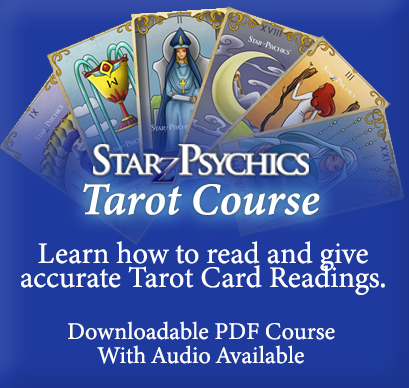- Home
- Editor's Notes
- Current Issue
- Riki Reflects
- Spiritual Traveler
- Starz Emporium
- Classifieds
- Advertise with Us
- Submissions
- Awards
- About Us
- Contact Us
Waking Up To Your Self
By Patrick Marando
.jpg) In the following chapters I discuss the emotions—innate uses and purposes. Each emotion has a distinct function and set of behaviors they motivate us toward that may assist in our functioning as our true self. Depending upon our conditioned egoic mind, our responses to them and identification with them they also have the ability to create much suffering for us. Our goal in understanding our emotions is to learn to differentiate between those triggered by our true self to help us function and those created by our conditioning which may not assist us to have a life connected to our true self.
I have divided emotions into different groups or “families” as I like to call them. These are: Happy/Sad Pleased/Hurt Relationship-with-the-Self Relaxed/Anxiety Calm/Anger Sensitive/Numb In general, the happy/sad, pleased/hurt and relationship-with-the-self family of emotions are our primary sets of emotions. They are our most vulnerable feelings and thus leave us feeling tender and exposed when they occur.
Anxiety, anger, and numbness families are more resistant emotions. They are designed to minimize the pain of the primary emotions. The anxiety family of emotions is usually secondary—a way to prevent feeling the primary emotions. The anger family is usually come secondary as a way to help us get rid of or solve the primary emotions. And the numbness family comes secondary as a way to dampen our pain to a manageable level. Noticing the emotion we feel and when it arises can minimize our suffering and wake us up to our true self in any situation. While the emotions have been divided into their families, it is important to realize any emotion we feel is just one end of a continuum of its opposite emotion. Although they appear to be opposite emotions they are not two distinct emotions but one with two sides, like two sides of one coin. Therefore, happy and sad are a single emotion on an emotional continuum, just like feeling pleased or hurt or any of the other emotions I discuss in this book. It is impossible for us to know one side of the emotion without the relative point of the other side. In general, feeling the shadow side of the emotion will motivate us to do something to move toward the light on the continuum. So far you have learned how to connect to your true self, find and change your beliefs, identify conditioned egoic thoughts and behaviors, allow emotions, and practiced self-love techniques. In this section I explore how to label emotions, be aware of their uses, actively navigate through them, and put together the knowledge you have gathered in this book with the intention of converting it to wisdom. Wisdom is the ability to apply knowledge, and without application, no amount of knowledge will make a difference in our lives or help us live from our true self. The more we apply the knowledge we create new pathways and responses to make our lives more peaceful. At the end of each consideration of an emotion is a step-by-step guide so you can apply the knowledge and practices to convert an emotion into wisdom. Chapter Twelve: The Happy/Sad Family of EmotionsEveryone is going to feel sad at some point in their lives. It is from sadness we are triggered to try to seek the happiness. Happiness is at the opposite end of the continuum to sadness. It is through knowing what makes us sad that we are able to garner motivation to move toward what it is that makes us happy. While feeling happy is a lot more pleasant for us, to live as our true self it is important to learn how to allow ourselves to feel sad.Sadness is the emotion I find people either struggle most with or try their best to avoid. We live in a society where we are constantly told to cheer up, be positive or be happy. Where we are taught to think about what makes us happy and do our best to get it. Everything taught to us from a young age is designed to motivate us to chase happiness. Most people when asked what they want for their lives answer with a simple “I want to be happy.” While it can be a useful mentality, we often adopt it at the expense of learning and knowing how to allow sadness to exist. After all there will be times in our lives where nothing we do will work to solve the sad emotion when it arises. Just think of losing a loved one through death, or perhaps finding out you or your child has a rare illness that effects their quality of life. Avoiding sadness in these instances (and many others) may be impossible, so our taught lessons of chasing away sadness end up creating more suffering. That is, unless we learn how to respect sadness and use it in the way it was designed to be used. Imagine for a moment a life without sadness. Only knowing the feeling of happiness. Seems ideal at first thought, doesn’t it? Without sadness, we would not know what happiness was. We would not have a relative point of emotion to compare our happiness to. It is impossible to know happiness without sadness. They are opposite ends of the same emotion. Plus, knowing what makes us sad/happy is also useful to guide us toward and away from what feels good and what feels bad. It is like an emotional compass guiding us toward the life most true to us and what we sincerely want. Apart from motivating us to chase happiness, sadness is the emotion that can assist us in releasing any emotional pain we may be suffering. If we were to think of a sad memory from the past, allowing ourselves to feel sad would assist us in coming to a place of acceptance as the pain releases. Or perhaps you may feel sad about a recent loss, or the state of affairs in the world today (illness, war, famine, political leaders). Allowing the sad feeling to arise within you, without perpetuating it (through conditioned egoic thoughts or behaviors) is your body and mind’s way of releasing the pain attached to the event or situation you feel sad about. Everyone experiences emotions differently. Generally, sadness depresses our bodily functions. Physically we may feel heavier, our movements get slower, we lose motivation, we lose energy, our zest for life is lower, we have heaviness or pain in our chest, feeling like we want to cry, have pressure behind our eyes and many other symptoms and sensations which are personal to you. These symptoms and sensations of sadness are designed to motivate the mind and body to release the pain of sadness. The body slows down to stop and reduce distraction so that the mind is able to reflect upon what is causing the sadness. This reflection allows the feelings of sadness to arise even more so the emotion is able to be released from your body. The body and mind are attempting to purge the sadness. The only way to purge it is to “feel it out”—to allow your body to have these unpleasant feelings without overly attempting to reduce their intensity. There are no short cuts in releasing sadness, there are no magic pills to take sadness away. Only allowing the sensations and symptoms of sadness and time will do this. What makes you feel sad will be personal to you. You may find you get sad about things that no one else gets sad about, or perhaps you share many similar sad situations. The true self will at times utilize sadness to cleanse our body of pain. If this is the case be okay to let the sadness exist. Other times it will utilize sadness to help motivate us toward creating what we truly want. In this case we may need to be brave enough to take action or patient enough to take action at the most suitable pace. However, being okay with feeling sad gives us the option about which action is the truest in the situation. Here are some other Emotions with similar functions to sad:
Waking Up to Your Self by Patrick Marando is available from https://www.o-books.com and from wherever books are sold. BOOK LINK: https://www.collectiveinkbooks.com/o-books/our-books/waking-up-to-your-self |
Share this article with friends!
|
Copyright © 1998 - 2025 Mystic Living Today All rights, including copyright, in the content of these Mystic Living Today web pages are owned or controlled for these purposes by Planet Starz, Inc. Terms of Service Disclaimer and Legal Information For questions or comment, contact Starzcast@mysticlivingtoday.com. Reproduction of this page in any form is not allowed without permission of the author and the owner of this site. All material on this web site, including text, photographs, graphics, code and/or software, are protected by international copyright and trademark laws. Unauthorized use is not permitted. You may not modify, copy, reproduce, republish, upload, post, transmit or distribute, in any manner, the material on this web site. Unless permissions is granted. |



